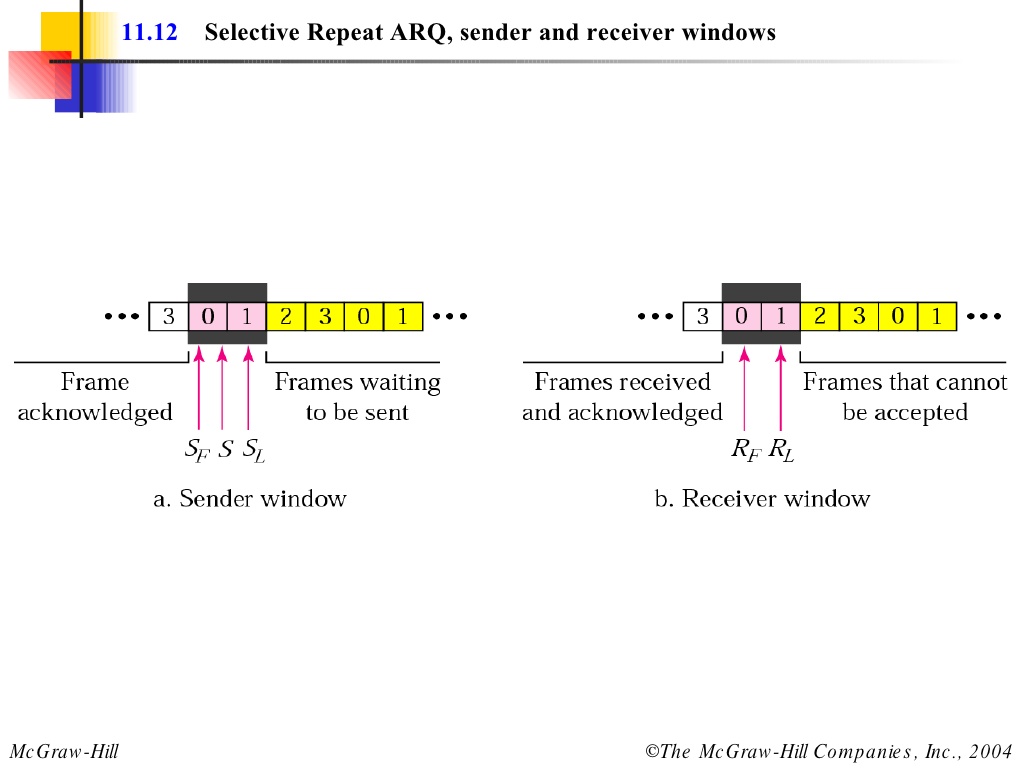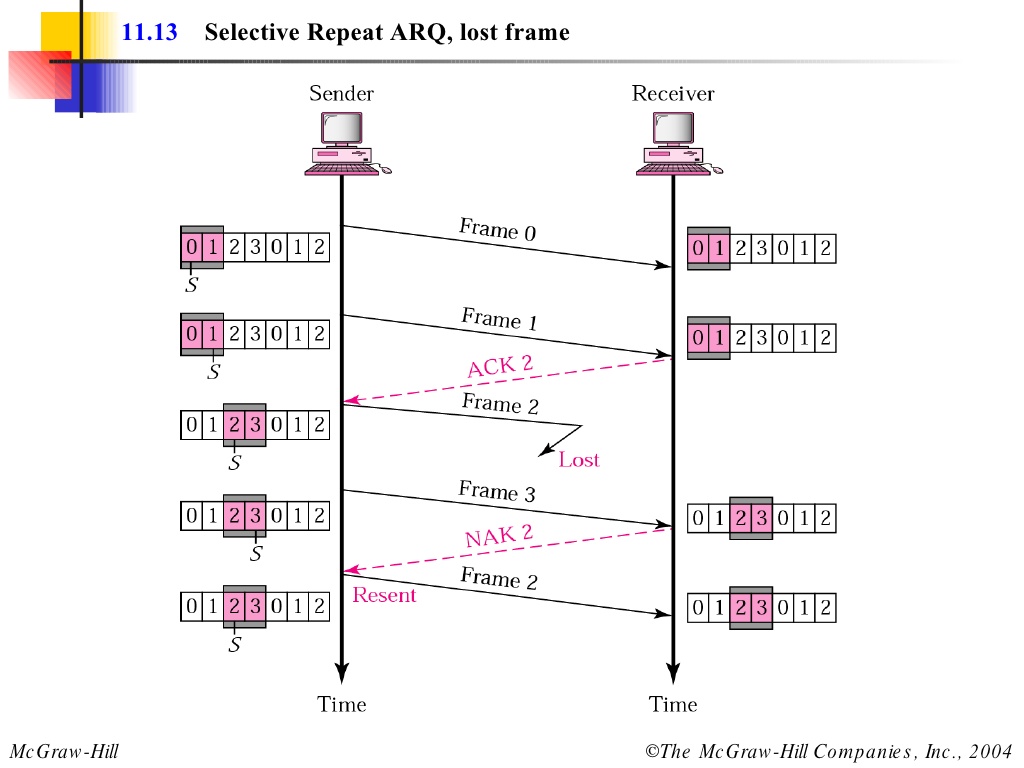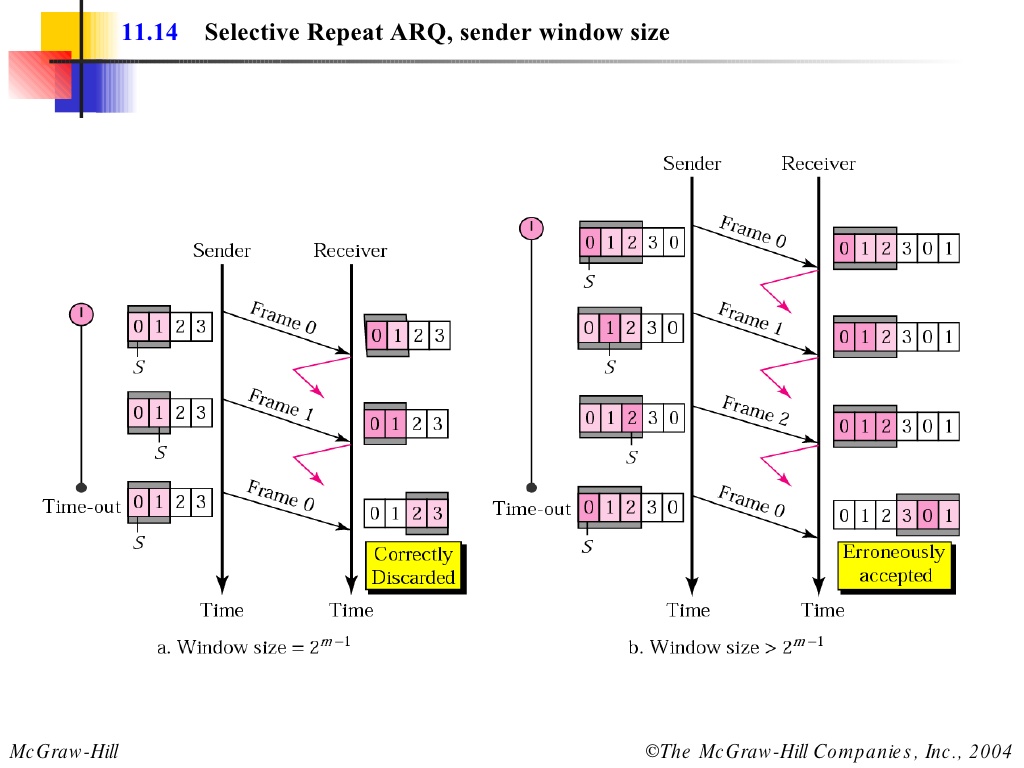Selective Repeat ARQ
For a system with ample memory space, Selective Reject Request ARQ may provide improved performance
when compared to Go-Back-N ARQ. This error control scheme allows the receiver to selectively reject
frames.
- Go-Back-N ARQ simplifies the process at the receiver site. Receiver only keeps track of only one variable, and there is no need to buffer out-of-order frames, they are simply discarded.
- However, Go-Back-N ARQ protocol is inefficient for noisy link. It bandwidth inefficient and slows down the transmission.
- In Selective Repeat ARQ, only the damaged frame is resent. More bandwidth efficient but more complex processing at receiver.
- It defines a negative ACK (NAK) to report the sequence number of a damaged frame before the timer expires.

- Frames 0 and 1 are accepted when received because they are in the range specified by the receiver window. It is the same for frame 3.
- Receiver sends a NAK2 to show that frame 2 has not been received and then sender resends only frame 2 and it is accepted as it is in the range of the window.


- Size of the sender and receiver windows must be at most one-half of 2 m. If m = 2, window size should be 2m/2 = 2.
- Figure compares a window size of 2 with a window size of 3.
- Window size is 3 and all ACKs are lost, sender sends duplicate of frame 0, window of the receiver expect to receive frame 0 (part of the window), so accepts frame 0, as the 1st frame of the next cycle – an error.